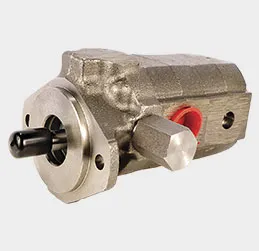types of die casting
Understanding Die Casting Types and Applications
Die casting is a manufacturing process that involves forcing molten metal into a mold cavity under high pressure. This technique is particularly popular in industries looking for high precision and excellent surface finishes. Various types of die casting methods cater to different materials, applications, and production requirements. In this article, we will explore the main types of die casting, their advantages, and their specific uses.
1. High-Pressure Die Casting
High-pressure die casting is one of the most commonly used methods, particularly for non-ferrous metals like aluminum, zinc, and magnesium. In this process, molten metal is injected into a steel mold under high pressure, allowing for the production of intricate shapes and components with fine details.
Advantages High-pressure die casting offers excellent dimensional accuracy, smooth surfaces, and a high production rate, making it ideal for mass production. It is widely used in the automotive industry for parts like engine blocks, transmission cases, and wheels.
2
. Low-Pressure Die CastingLow-pressure die casting is characterized by the application of much lower pressure than high-pressure techniques. In this method, molten metal is poured into the mold, and air pressure is applied to fill the mold cavity. This process is better suited for larger and thicker components.
Advantages The primary benefit of low-pressure die casting is the reduced risk of defects such as porosity and air entrapment. This method is commonly used in manufacturing high-quality castings for automotive and aerospace applications, including components like cylinder heads and structural parts.
3. Gravity Die Casting
Gravity die casting relies on the gravitational force to fill the mold cavity with molten metal. The molds used in this process are traditionally made of steel and can be reused multiple times, making this method cost-effective for medium to high volume production.
types of die casting

Advantages Although gravity die casting does not produce components with the same precision as high-pressure methods, it is excellent for producing large parts with good surface quality. It is frequently employed for manufacturing parts that require good mechanical properties, such as industrial machinery components.
4. Vacuum Die Casting
Vacuum die casting is a variation of the traditional method that utilizes a vacuum to draw molten metal into the mold. This process minimizes air contamination and ensures better quality castings.
Advantages The primary advantage of vacuum die casting is the production of high-quality components with minimal defects, particularly in terms of porosity. This process is commonly applied in industries requiring high-performance parts, such as aerospace and medical fields.
5. Squeeze Die Casting
Squeeze die casting combines elements of both high-pressure and gravity die casting. In this method, the molten metal is poured into the mold, and a plunger applies pressure to ensure that the mold cavity is completely filled. This technique is often used for casting metals with high fluidity.
Advantages Squeeze die casting is beneficial for manufacturing thin-walled components and helps reduce the likelihood of defects. Applications include creating precision parts in the automotive and electronics industries.
Conclusion
Die casting is a versatile and efficient manufacturing process with various techniques suited for different materials and applications. Each type of die casting, including high-pressure, low-pressure, gravity, vacuum, and squeeze die casting, has its unique advantages, making them appealing for specific industrial needs. Understanding these types can help manufacturers choose the right method for their projects to ensure quality castings, cost efficiency, and optimum production rates. As industries continue to evolve, die casting remains a fundamental process in creating intricate, durable, and high-quality metal components.
-
Precision Casting AI Solution with GPT-4-Turbo | Optimized QualityNewsAug.02,2025
-
Precision Sheet Metal Stamping Manufacturer | Fast & ReliableNewsAug.01,2025
-
OEM Sand Cast Pump Valve Fittings - Baoding Hairun Machinery And Equipment Trading Co., Ltd.NewsAug.01,2025
-
Custom OEM Impellers | High Efficiency & PrecisionNewsAug.01,2025
-
OEM Sand Cast Pump Valve Fittings - Baoding Hairun Machinery | Customization, Quality AssuranceNewsAug.01,2025
-
OEM Sand Cast Pump Valve Fittings - Baoding Hairun Machinery And Equipment Trading Co., Ltd.NewsAug.01,2025















